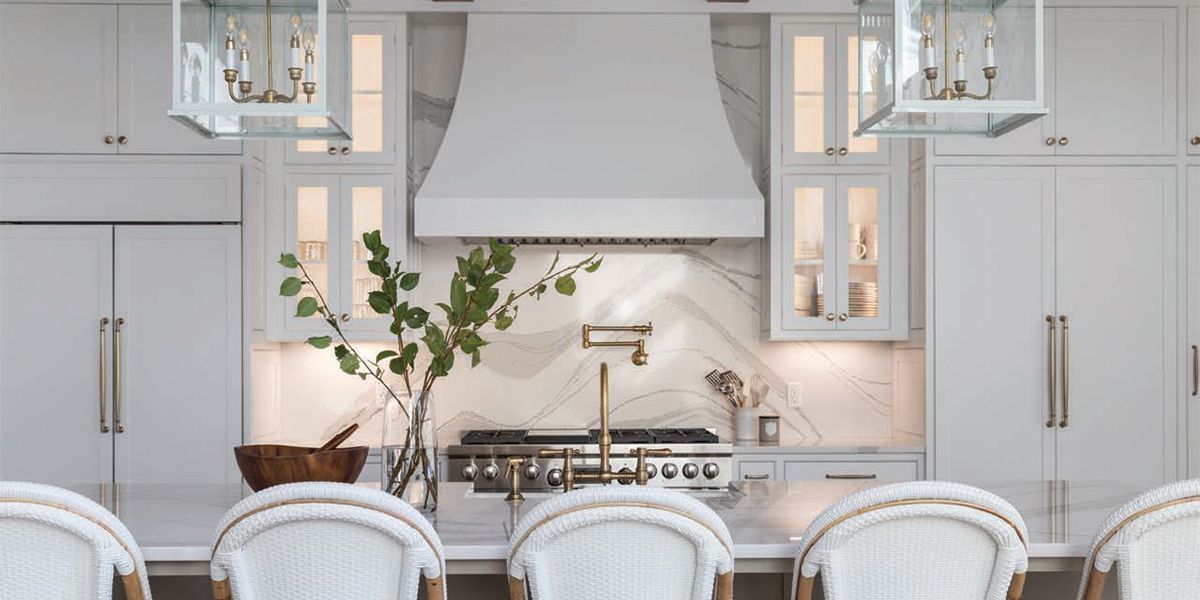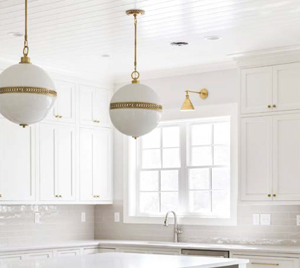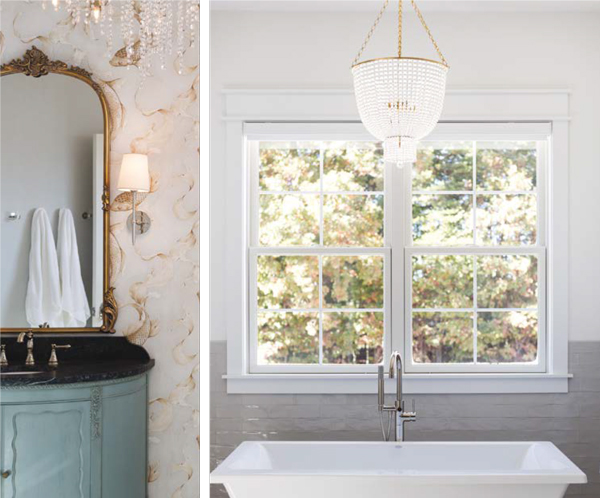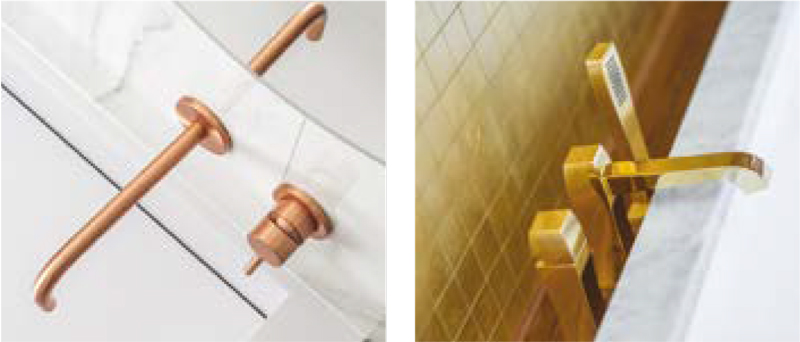Striking Gold | Designing with Today’s Metallic Hardware

Photos and Project: Tera Janelle Design
Metallic hardware is striking gold in the design world. But forget about the shiny gold and glossy brass finishes that were popular in the 80s. They have taken a back seat to today’s softer tones. Gold, copper, brass and bronze hardware with various finishes have taken center stage. Whether it be oil-rubbed, matte, brushed or antiqued, gold metallic hardware can add a touch of elegance to any space. These warmer tones are updating the brushed nickel and chrome finishes that have dominated the market for years.
Tera Janelle of Tera Janelle Design incorporates gold and other metallic hardware in her designs to add “a timeless sense of style.” She often uses a dominant finish of brass or gold, and mixes in other elements to create layers and depth. Janelle warns that not all finishes mean the same thing to manufacturers. “Always get a sample,” she says.
A breakdown of metallic finish terminology is helpful when selecting hardware. A polished finish is created by using polishing compounds and a fast-spinning brush to smooth out the gold surface. Brushed finishes are created by brushing a finegrit surface in one direction against the gold. The varying applications of buffing and grinding result in the subtle difference of the finishes. Oxidizing and patinating occur chemically in copper and brass. Oxidized copper and brass are typically blackish, green or blue, and the surface hardens like a thick crust. “People either love the look of patina or hate it,” says Janelle. She believes unlacquered brass and copper that have aged naturally can add a historic feel to a home. “The natural patina of unlacquered and aged brass is a beautiful partner to natural materials and textures, such as marble, quartzite, soapstone, linens and natural wood tones,” she says.
HARDWARE FINISHES
So just how do you decipher manufacturers’ hardware finish descriptions? In addition to getting a sample, it’s helpful to know:
- Brushed gold is a dull polished metal that has a unidirectional finish.
- Satin gold will appear more matte than a polished finish, but will lack the texture that a brushed finish offers.
- Vintage brass, or antique brass, is a metal that will naturally patina with age, giving it depth and history. Polished lacquered brass is shinier and has taken a back seat to vintage brass.
- In the copper family, champagne bronze is a brushed copper tone with more yellow than an antique bronze; it is a deeper version of gold.
- Honey bronze has a finish reminiscent of brass or gold, but it tends to be a softer, lighter shade.
- Oil-rubbed bronze is a chemically darkened surface designed to simulate aged bronze. It is very dark and varies from a deep chocolate brown to a dark gray and usually has copper undertones.
- Copper hardware has a distinctive reddish hue. It is malleable and supple and makes for beautiful cabinet hardware. Sometimes it comes with hammered indentations.
 Can you mix metals? Absolutely. Mixing metals is a wonderful way to add depth to a space, but it should be approached with caution. Warm metals (like gold, brass and nickel) read as a rich pop of color and texture when placed with cool metals like silver and chrome. For example, if your kitchen hardware is in an oil-brushed bronze, copper accent pieces will add a warm glow. If you have a modern, stainless steel kitchen, choosing a chandelier or vintage piece with gold can add charm and texture. Or if you love the gold and white look, add in a chrome table, mirror or pendant light for metallic balance.
Can you mix metals? Absolutely. Mixing metals is a wonderful way to add depth to a space, but it should be approached with caution. Warm metals (like gold, brass and nickel) read as a rich pop of color and texture when placed with cool metals like silver and chrome. For example, if your kitchen hardware is in an oil-brushed bronze, copper accent pieces will add a warm glow. If you have a modern, stainless steel kitchen, choosing a chandelier or vintage piece with gold can add charm and texture. Or if you love the gold and white look, add in a chrome table, mirror or pendant light for metallic balance.

Janelle often mixes metals when designing spaces. “It needs to look intentional rather than a mistake,” she warns. She might choose two or three metal finishes and use those finishes in at least two or three areas within the space. Contrast is key. Janelle believes it is more forgiving to match brass and gold hardware with painted finishes. “Dark paint colors on cabinets and walls are a beautiful backdrop for gold accents,” she says. Adding a brass chandelier or pair of sconces is a trick of hers to introduce metal into a space.
When considering hardware as part of the whole room’s design, Janelle likes the look of brass with oak floors. “Brass is a beautiful complement to European Oak and whitewashed floors, but be careful when pairing with stained oak floors that have heavy gold or orange undertones,” she says.
Playing with hardware is an easy way to transform a look without breaking the bank. Trying out some of the gold-toned hardware pieces trending in today’s design world is much easier than switching out countertops, replacing cabinetry or repainting walls. Like wardrobe accessories, they can easily be switched out if you want a change. ◆
antique brass, antiqued, brass, bronze, brushed, Brushed gold, champagne bronze, copper, glossy brass, Gold, gold metallic, Honey bronze, matte, METALLIC HARDWARE, oil-rubbed, Oil-Rubbed Bronze, Oxidizing, patinating, Satin gold, shiny gold, Vintage brass








